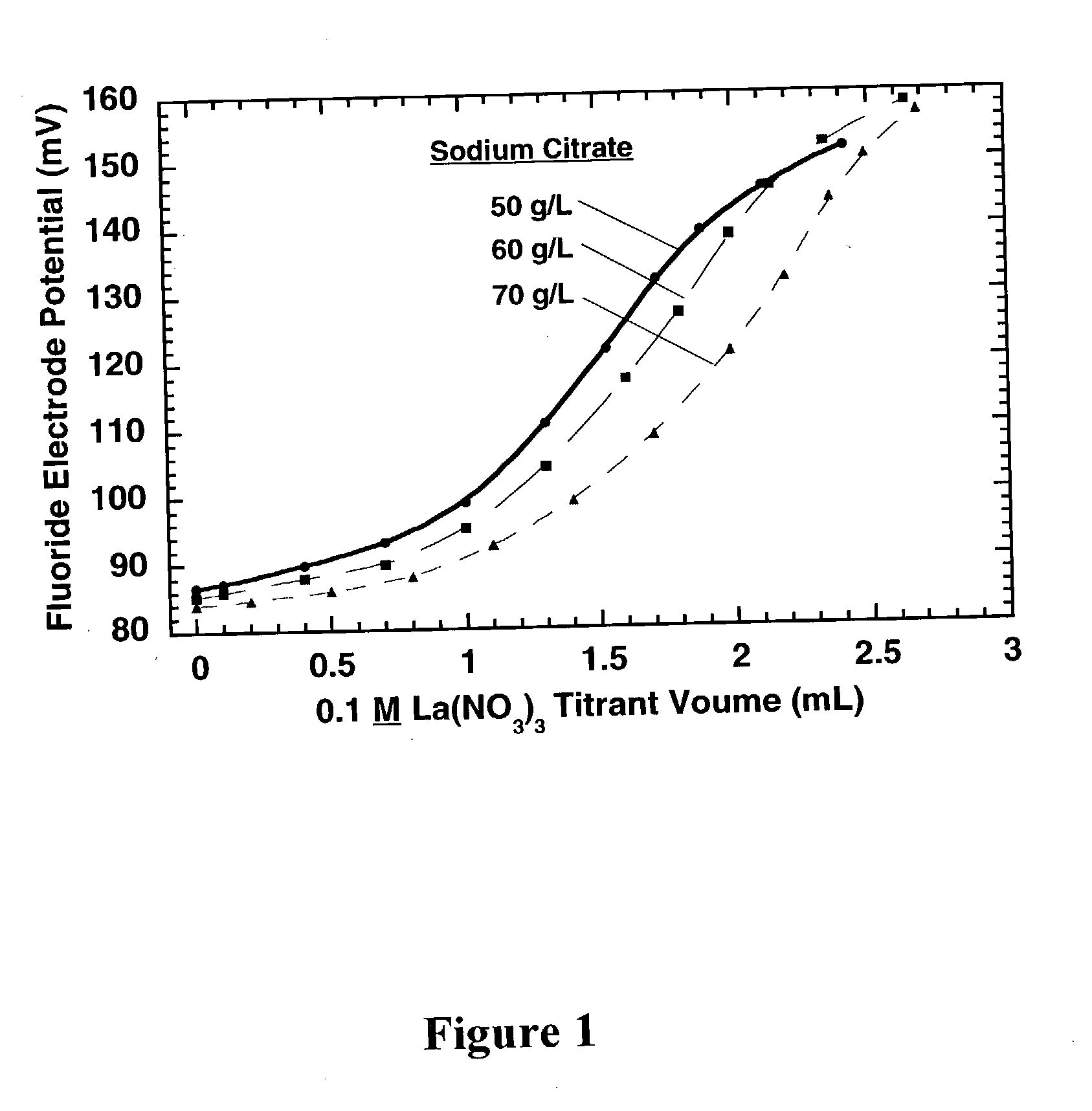Measurement of complexing agent concentration in an electroless plating bath
a technology of complexing agents and electroless plating baths, which is applied in the direction of material electrochemical variables, instruments, and phase/state change investigations, etc., can solve the problems of complex measurement of complexing agent concentrations in electroless plating baths, reduced overall resistance of circuit traces, and high barrier layer conductivity
- Summary
- Abstract
- Description
- Claims
- Application Information
AI Technical Summary
Benefits of technology
Problems solved by technology
Method used
Image
Examples
Embodiment Construction
[0029] In a preferred embodiment of the present invention, the concentration of citrate complexing agent (C.sub.6H.sub.5O.sub.7.sup.3+) in an electroless cobalt or nickel plating bath is determined by titrating a sample of the electroless plating bath containing a small concentration of NaF (0.5-500 mg / L) with a 0.1 M La(NO.sub.3).sub.3 titrant solution. As the titrant solution is added to the test solution (plating bath sample containing free fluoride ion), La(NO.sub.3).sub.3 reacts with sodium citrate (Na.sub.3C.sub.6H.sub.5O.sub.7) to form lanthanum citrate (LaC.sub.6H.sub.5O.sub.7) and sodium nitrate (NaNO.sub.3), according to the equation:
La(NO.sub.3).sub.3+Na.sub.3C.sub.6H.sub.5O.sub.7=LaC.sub.6H.sub.5O.sub.7+3 NaNO.sub.3
[0030] After the equivalence point is reached, lanthanum nitrate begins reacting with sodium fluoride (NaF) to form lanthanum fluoride (LaF.sub.3), according to the equation:
La(NO.sub.3).sub.3+3 NaF=LaF.sub.3+3 NaNO.sub.3
[0031] which causes the free fluoride c...
PUM
 Login to View More
Login to View More Abstract
Description
Claims
Application Information
 Login to View More
Login to View More - R&D
- Intellectual Property
- Life Sciences
- Materials
- Tech Scout
- Unparalleled Data Quality
- Higher Quality Content
- 60% Fewer Hallucinations
Browse by: Latest US Patents, China's latest patents, Technical Efficacy Thesaurus, Application Domain, Technology Topic, Popular Technical Reports.
© 2025 PatSnap. All rights reserved.Legal|Privacy policy|Modern Slavery Act Transparency Statement|Sitemap|About US| Contact US: help@patsnap.com

